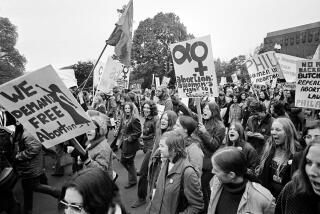The best and worst of Rove
It was fitting that White House political guru Karl Rove announced his resignation this week in an interview on the editorial page of the Wall Street Journal, the premier bulletin board for the conservative movement. Speaking to conservatives has been the centerpiece of Rove’s distinctive political vision. That was its great strength -- and its fatal weakness.
Under Rove and President Bush, Republican policy and legislative and electoral strategies intertwined. Bush aimed to pass his legislative agenda by unifying congressional Republicans rather than dividing Democrats. He sought to win elections more by increasing Republican turnout than by attracting independent and swing voters. His policy agenda -- with the notable exceptions of education and immigration -- promoted the other two goals by almost unwaveringly advancing conservative priorities that enthused Republicans and antagonized Democrats.
Each of these approaches reflected Rove’s conviction that the heightened ideological conflict between the parties since the 1960s, particularly about social issues, had left very few genuine swing voters. In that environment, he believed, a president had little chance to attract support from voters or lawmakers outside his core coalition. Thus the key to a president’s success was uniting and energizing his own party -- even if that meant igniting passionate opposition from the other. Rather than seeking to reverse the polarization in American politics, Bush and Rove sought to channel it to their advantage.
Rove didn’t construct this strategy alone. His focus on maximizing the contrast between the parties built on the thinking of former House Speaker Newt Gingrich (like Rove, an autodidact who marinated himself in political history). And like Gingrich, Rove was too much the visionary to ignore opportunities for reaching new constituencies. “You are kidding yourself if you don’t think there is constant reaching out,” Rove told me in an interview last year.
But with Rove’s leadership, the White House undertook a very specific kind of political outreach. Rather than seeking to realign the overall electorate with a message and agenda that appealed broadly across party lines, Rove targeted appeals at niche groups, such as the religiously devout African Americans who were courted with grants from the White House initiative to fund faith-based social services. Rove took it as a given that Bush could never convert the broad mass of voters skeptical of him, and he increasingly portrayed the intense opposition the president provoked as a badge of honor -- proof that Bush was making tough decisions.
For a time, this strategy produced reliable dividends. During Bush’s first term, congressional Republicans voted together at rates not seen in a century, allowing the White House to smoothly pass its agenda despite narrow GOP majorities in both chambers. Bush’s steadfast support from the Republican base, combined with the breakthrough voter-contact tactics Rove helped design, produced a massive GOP turnout that not only powered the president’s reelection but carried his party to congressional gains in 2002 and 2004.
But Bush’s second term has relentlessly revealed the limits of Rove’s approach. Bush’s margin of victory in 2004, measured as a share of the popular vote, was the smallest ever for a reelected president. And because nearly half the country opposed him even at his high point, Bush’s approval rating plummeted to dangerous depths when events turned against him, as they did through 2005 in Iraq and at home, with Hurricane Katrina and the public rejection of his Social Security restructuring plan.
The collapse of Bush’s public standing diminished his ability to move his ideas through Congress even while Republicans still held the majority. His refusal to include even sympathetic Democrats in decision-making on Iraq left him dangerously alone as conditions there deteriorated. The downward spiral culminated in last year’s election in which Republicans lost the House and Senate, mostly because independents -- the swing voters Rove believed were largely extinct -- broke overwhelmingly against the GOP. “He had a very self-conscious strategy of polarizing the country,” said Stanley Greenberg, the Democratic operative who most matches Rove’s sweep of vision, “and it polarized the country against them.”
Rove aspired not only to shape a single presidency but to design an enduring Republican majority. It’s too early to know whether last year’s Republican losses rendered a final verdict on that project, but the GOP now holds fewer House and Senate seats and governorships than before Bush took office, and Democrats have widened their lead in partisan identification among voters. Independents remain disillusioned with Bush, threatening the GOP in 2008.
After Bush’s disastrous second term, it’s difficult to imagine that another president will try to govern with so much resistance to compromise and so little concern for opinions outside his coalition. Rove often maneuvered with great skill (and better humor than he’s credited with), but he leaves Washington as a brilliant tactician in the service of a fundamentally flawed strategy.
--
More to Read
Get the L.A. Times Politics newsletter
Deeply reported insights into legislation, politics and policy from Sacramento, Washington and beyond. In your inbox three times per week.
You may occasionally receive promotional content from the Los Angeles Times.










